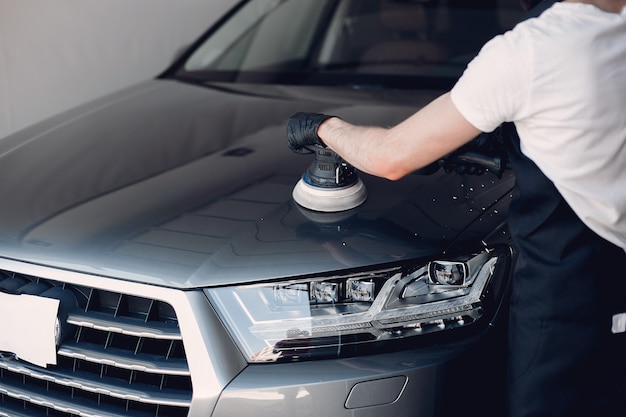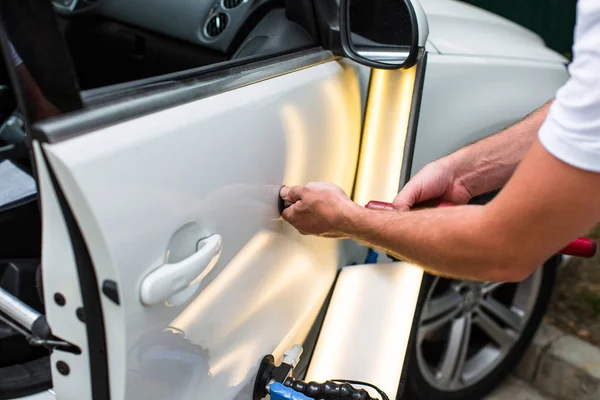Exploring The Technological Advancements In Paintless Dent Repair Equipment And Techniques
In the realm of automotive repair, the evolution of techniques and equipment has been constant, with advancements aimed at efficiency, precision, and sustainability. One such area of advancement is in paintless dent repair (PDR), a technique that has revolutionized the way dents are removed from vehicles without the need for traditional bodywork or repainting. In this article, we delve into the technological advancements shaping the field of PDR, from innovative equipment to cutting-edge techniques. Discover a skilled paintless dent repair shop in Idaho.
Understanding Paintless Dent Repair (PDR)
Before delving into the advancements, let's first understand what PDR entails. Paintless dent repair is a method used to remove minor dents and dings from the body of a vehicle without disturbing the original paint finish. It involves accessing the backside of the dent and gently massaging it out using specialized tools, thus restoring the panel to its original shape.
Advancements in Equipment

Precision Tools for Enhanced Results
One of the significant advancements in PDR lies in the development of precision tools. These tools are designed to provide technicians with greater control and accuracy when manipulating the metal. Traditional PDR tools consisted mainly of rods and hooks, which required a skilled technician to maneuver effectively. However, modern precision tools incorporate innovative features such as adjustable angles, ergonomic grips, and interchangeable tips, allowing for more precise and efficient dent removal.
Furthermore, the integration of technologies such as LED lighting and camera systems into PDR tools has improved visibility and accuracy. LED lights illuminate the work area, allowing technicians to identify imperfections more easily, while camera systems provide real-time imaging for better monitoring of the repair process. These advancements not only enhance the quality of repairs but also streamline the workflow, reducing the time and effort required to achieve optimal results.
Automated Dent Detection Systems
Another notable advancement in PDR technology is the development of automated dent detection systems. These systems utilize artificial intelligence and computer vision algorithms to analyze images of vehicle panels and identify imperfections with high precision. By automating the detection process, technicians can quickly assess the extent of damage and determine the most suitable repair strategy, thus improving efficiency and accuracy.
Automated dent detection systems also facilitate seamless integration with other PDR equipment, such as robotic arms and precision tools. This integration enables automated dent removal processes, where robots equipped with specialized tools perform the repair under the guidance of computer algorithms. Not only does this reduce the reliance on manual labor, but it also ensures consistent results across different repair jobs.
Advancements in Techniques

Glue Pulling Technology
In addition to equipment advancements, there have been significant developments in PDR techniques, with glue pulling technology being one of the most notable. Glue pulling involves applying specialized adhesive tabs to the surface of the dent and using a pulling device to gradually lift the dent out. This technique is particularly effective for shallow dents and areas where access is limited, such as panel edges and contours.
Advancements in glue pulling technology have led to the development of stronger adhesives and more efficient pulling devices, allowing technicians to tackle a wider range of dents with greater ease. Furthermore, the introduction of heat-induction systems has enhanced the effectiveness of glue pulling by softening the paint and making it more pliable, thus reducing the risk of paint damage during the repair process.
Paintless Dent Repair Training Programs
Lastly, advancements in PDR techniques extend to the training programs available for aspiring technicians. With the increasing demand for skilled PDR professionals, training institutions and organizations have developed comprehensive courses that cover both the theoretical and practical aspects of paintless dent repair. These programs incorporate hands-on training with the latest equipment and techniques, ensuring that graduates are well-equipped to handle various repair scenarios effectively.
Moreover, online training platforms and virtual reality simulations have emerged as valuable tools for PDR training, allowing students to practice their skills in a simulated environment before transitioning to real-world applications. By leveraging technology in training programs, aspiring PDR technicians can gain valuable experience and proficiency in the field, thus contributing to the continued advancement of PDR techniques and practices.
Impact on the Automotive Repair Industry
- Increased Efficiency: The integration of advanced equipment and techniques in paintless dent repair (PDR) has significantly increased the efficiency of automotive repair facilities. Technicians can now complete repairs in a fraction of the time required for traditional bodywork methods, allowing facilities to serve more customers and generate higher revenues.
- Cost Savings: PDR offers a cost-effective alternative to traditional bodywork techniques, as it eliminates the need for expensive materials such as paint and filler. This results in cost savings for both repair facilities and vehicle owners, making automotive repairs more accessible and affordable.
- Improved Customer Satisfaction: The faster turnaround times and superior outcomes achieved through PDR contribute to improved customer satisfaction. Vehicle owners appreciate the convenience and quality of PDR repairs, leading to increased loyalty and positive word-of-mouth referrals for repair facilities.
- Expansion of Service Offerings: The adoption of PDR technology enables repair facilities to expand their service offerings beyond traditional bodywork repairs. By leveraging advanced equipment and techniques, facilities can address a wider range of damage, including minor dents, dings, and hail damage, enhancing their competitiveness in the market.
- Environmental Benefits: PDR is a more environmentally friendly repair method compared to traditional bodywork techniques, as it produces less waste and consumes fewer resources. By minimizing the use of chemicals and reducing energy consumption, PDR contributes to a greener automotive repair industry.

